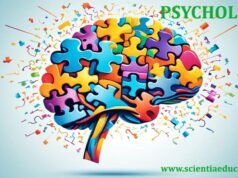Basic Economics Concepts
- “Introduction to Economics: Understanding the Basics”
- “Key Economic Terms and Their Importance in Exams”
- “Microeconomics vs. Macroeconomics: A Detailed Comparison”
- “Scarcity and Opportunity Cost Explained for Beginners”
- “The Role of Resources in Economic Systems”
- “Understanding Economic Goods and Free Goods”
- “The Concept of Utility and Consumer Behavior in Economics”
- “Demand and Supply: A Comprehensive Guide for Students”
- “Price Mechanism: How Markets Work”
- “Elasticity of Demand and Supply: A Key Exam Topic”
Microeconomics
- “Theory of Consumer Behavior: An In-Depth Analysis”
- “Production and Costs: A Simplified Explanation”
- “Perfect Competition vs. Monopoly: Key Differences”
- “Market Structures: Oligopoly and Monopolistic Competition”
- “Game Theory and Strategic Thinking in Economics”
- “Factors of Production: Understanding Land, Labor, Capital, and Entrepreneurship”
- “The Role of Marginal Cost and Marginal Revenue in Decision-Making”
- “Externalities and Market Failure: A Critical Analysis”
- “Public Goods vs. Private Goods: A Comparison”
- “Consumer Surplus and Producer Surplus Simplified”
Macroeconomics
- “Gross Domestic Product (GDP): Measuring Economic Performance”
- “Inflation: Types, Causes, and Effects”
- “Unemployment: Definitions and Types for Exams”
- “National Income and Its Measurement Techniques”
- “The Circular Flow of Income in a Two-Sector Economy”
- “Understanding Aggregate Demand and Aggregate Supply”
- “The Phillips Curve: Inflation and Unemployment Relationship”
- “Monetary Policy: Tools and Objectives”
- “Fiscal Policy: Role in Economic Stability”
- “Balance of Payments: Components and Importance”
Development Economics
- “Economic Growth vs. Economic Development: Key Differences”
- “Indicators of Economic Development: HDI, GDI, and More”
- “The Role of Foreign Aid in Developing Economies”
- “Sustainable Development and Its Relevance Today”
- “Population Growth and Economic Development: A Double-Edged Sword”
- “The Role of Technology in Economic Development”
- “Poverty and Inequality: A Global Perspective”
- “Demographic Transition Theory Explained”
- “Challenges of Urbanization in Developing Countries”
- “The Green Economy: A New Paradigm in Development”
International Economics
- “Globalization: Economic Opportunities and Challenges”
- “Free Trade vs. Protectionism: Which Works Better?”
- “Exchange Rates: Fixed vs. Flexible Systems Explained”
- “The Role of the World Trade Organization (WTO)”
- “International Monetary Fund (IMF): Objectives and Functions”
- “The World Bank: Role in Global Development”
- “Trade Theories: Comparative Advantage and Absolute Advantage”
- “The Balance of Trade vs. Balance of Payments”
- “Foreign Direct Investment (FDI): Benefits and Risks”
- “The Impact of Regional Trade Agreements on Global Trade”
Public Economics
- “Taxation: Types, Principles, and Effects on Economy”
- “Government Budget: Structure and Objectives”
- “Public Debt: Causes, Effects, and Solutions”
- “Role of Public Goods and Externalities in Public Economics”
- “The Laffer Curve and Taxation Efficiency”
- “Social Welfare Programs and Their Economic Impact”
- “Subsidies: Advantages and Disadvantages in Economics”
- “Role of Public Sector Enterprises in Economic Development”
- “Fiscal Deficit and Its Implications for the Economy”
- “Understanding Welfare Economics: Pareto Efficiency and Beyond”
Economic Systems
- “Capitalism vs. Socialism: A Comparative Study”
- “Mixed Economy: Features and Advantages”
- “Command Economy: Characteristics and Limitations”
- “Traditional Economies: An Insight into Primitive Systems”
- “Transition Economies: From Socialism to Market Economies”
- “Role of the Informal Sector in the Economy”
- “Circular Economy: An Emerging Economic Model”
- “Digital Economy: The Future of Economic Systems”
- “The Gig Economy: Opportunities and Challenges”
- “Behavioral Economics: Insights into Human Decision-Making”
Applied Economics
- “Econometrics: Applications and Importance”
- “Environmental Economics: A Study of Sustainability”
- “Health Economics: Understanding Healthcare Systems”
- “Agricultural Economics: Key Concepts and Trends”
- “Industrial Economics: Understanding Market Structures”
- “Labor Economics: Wage Determination and Employment Trends”
- “Transport Economics: The Role of Infrastructure in Development”
- “Financial Economics: Risk, Return, and Investment Analysis”
- “Urban Economics: Challenges of Modern Cities”
- “Energy Economics: The Role of Renewable Resources”
Historical and Contemporary Economic Thought
- “Adam Smith and the Wealth of Nations: Key Ideas”
- “Karl Marx and His Economic Philosophy”
- “Keynesian Economics: Theory and Practice”
- “Classical vs. Neoclassical Economics”
- “Milton Friedman and Monetarism”
- “Behavioral Economics: A Modern Approach”
- “Institutional Economics: Role of Institutions in Economic Performance”
- “Joseph Schumpeter and the Concept of Creative Destruction”
- “Development Economics: Contributions of Amartya Sen”
- “The Austrian School of Economics: Key Principles”
Exam-Specific Topics
- “Top Economics Topics for SAT and ACT Exams”
- “IB Economics: Tips for Scoring High”
- “Key Economic Theories for UPSC Aspirants”
- “Economics Syllabus for Cambridge IGCSE”
- “Economics for GRE: Essential Topics to Cover”
- “Understanding AP Microeconomics and Macroeconomics”
- “Tips for Cracking Economics Sections in SSC and Banking Exams”
- “Most Important Economics Topics for NET Exams”
- “Economics for GMAT: A Comprehensive Guide”
- “Advanced Placement Economics: Study Strategies and Resources”







